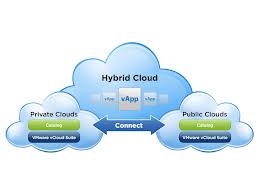
virtual machines
There are 3 posts tagged virtual machines (this is page 1 of 1).
vCenter XVP Manager and Converter
The battle for the hypervisor continues. VMware still is ahead of it’s competitors, but Microsoft and Citrix are gaining market share in the hypervisor area. From the start these vendors have had tools to convert virtual machines from VMware ESX / ESXi to one of the hypervisors by the competitors and to manage VMware ESX machines.
VMware has it’s own VMware Labs. Here flings are presented to the public for beta testing. These are applications that you can download and tested within your own environment. Flings are applications that may one day be incorporated into vSphere. Till that time flings are not supported by VMware. So use at you own risk within your environment.
VMware now also created a tool to manage third-party hypervisors and convert VMs from a third-party competitive hypervisor platform to VMware ESX / ESXi :
VMware XVP Manager and Converter
VMware vCenter XVP Manager and Converter provides basic virtualization management capabilities for non-vSphere hypervisor platforms towards enabling centralized visibility and control across heterogeneous virtual infrastructures. It also simplifies and enables easy migrations of virtual machines from non-vSphere virtualization platforms to VMware vSphere.
Features
Management of the following Microsoft Hyper-V platforms:
- Microsoft Hyper-V Server 2008
- Microsoft Windows Server 2008 (64-bit) with Hyper-V role enabled
- Microsoft Hyper-V Server 2008 R2
- Microsoft Windows Server 2008 R2 with Hyper-V role enabled
Familiar vCenter Server graphical user interface for navigating through and managing non-vSphere inventory
Ease of virtual machine migrations from non-vSphere hosts to vSphere inventory
Compatible with VMware vCenter Server 4.0 & 4.1
Scalable up to management of 50 non-vSphere hosts
You can get your own copy at http://labs.vmware.com/flings/xvp
Guest VM Operations inside Hyper-V
Remote USB for virtual machines
Virtualization of servers results in the fact that server are no longer depeded on the hardware on which it runs. This is one of the key selling points of virtualization, but it also results in the fact that you can’t connect external hardware devices to your virtual machine directly.
Especially for USB devices this can be a problem. There are still application vendors out there that have implemented some sort of USB dongle for licensing their software. To make it possible to connect your USB dongle to a virtual machines an implementation is needed of remote USB to connect the USB devices to your virtual machine.
The following picture gives a graphical representation of how this works.
The concept of remote USB is based on the client-server model. All USB devices will be centralized to one USB remote server. Through a software USB device driver (=client) in the virtual machine a connection is made with this USB remote server.
Through management on the USB remote server, USB devices can be allocated to a particular virtual machine. This allows virtual machines to make use of USB devices without connecting that USB device to the hardware on which it runs. All USB data is now send over the network from the virtual machine to the remote USB server and vice versa.
There are several vendors on the market with a remote USB solution. All have the same result : giving access to USB devices over the network. Only difference is that some have software based solution while others have a hardware based solution.
When using a software based solution a server is needed that acts as the remote USB host. The server must have enough USB slots available to connect all the USB devices. The hardware based solution is a network device which act as the end point in the remote USB solution. All USB devices will be connected to this network device.
Examples :
- AnywhereUSB (hardware)
- Keyspan USB device server (hardware)
- USB over Network (software)
- USB over Ethernet (software)
Note : Remote USB isn’t needed for VDI implementations. Most VDI vendors have USB redirection incorporated into their solution. In case you are using thin clients, USB redirection can also be implemented on the thin client policy server.

